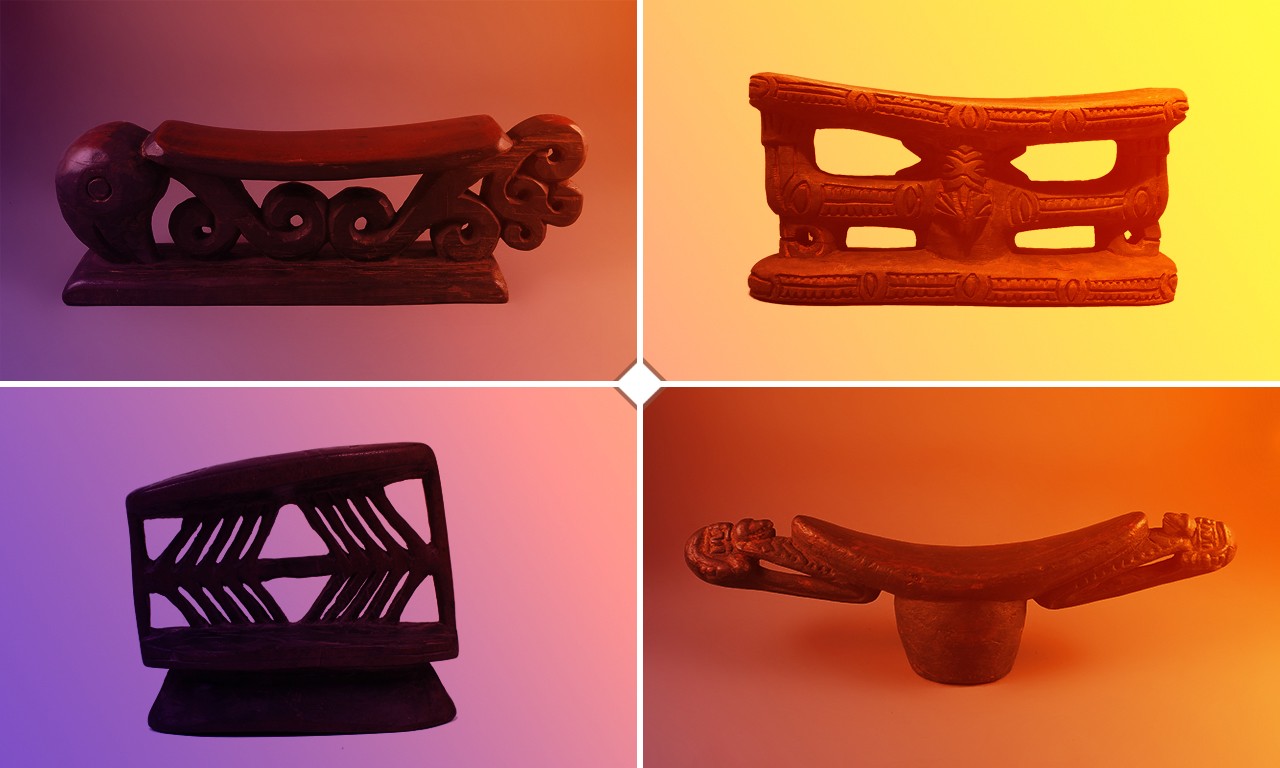 |
Headrests, 20th Century
New Guinea, Melanesia
Wood
2019.22.23; 2015.7.11; 2018.14.37 and 2019.22.29
Gifts of Mr. Michael Hamson and Anonymous Donor |
Island Dreams
Barring Boris Karloff’s 1932 rendition of a mummy caught in eternal vertical slumber and perhaps a few other standing sleepers throughout history and literature, most of us sleep in a decidedly horizontal position. Part and parcel to that is some sort of device for keeping one’s head off the ground. Our last post on the subject, Swiss Army Pillows: Headrests of Eastern Africa, took a look at how wooden headrests traditionally took the place of feather pillows in Eastern Africa. Wooden headrests were, or remain to be, used in many places throughout the world including on the large island of New Guinea in Oceania. As the largest island in Oceania, the island’s headrests are an entire universe of variation. In this post we look at five different headrests from the New Guinea studying their morphology and usage.
|
|
Headrest (Amba Ragat), early 20th Century
Iatmul culture; Middle Sepik River region, East Sepik Province, Papua New Guinea, Melanesia, Oceania
Wood and cane; 7 x 22 3/4 x 5 in.
2013.2.1
Bowers Museum Purchase |
Headrest, 20th Century
Murik or Iatmul culture; East Sepik Province, Papua New Guinea, Melanesia
Wood; 4 3/8 × 13 × 2 3/4 in.
2019.22.23
Anonymous Gift |
This Little Piggy Went to the Headrest
The vernacular term for the headrests made by the Iatmul of the Sepik River is amba ragat which literally translates to “head stool.” The Iatmul culture lives on a lengthy stretch of New Guinea’s longest river and the headrests they make vary in style depending more on usage rather than geography. The first of these is a simpler form for daily use which is composed of strips of hardened rattan supporting a carved wooden beam. The carved terminals of this beam represent totemic animals or ancestral beings with crocodiles and humans used most regularly. The pig motif seen here was also a common totem. The other type of Sepik-area headrest also has figurative end caps but varies in its supporting structure. Every Sepik headrest is unique in design, though the thick central column support of this second headrest makes it an outlier.
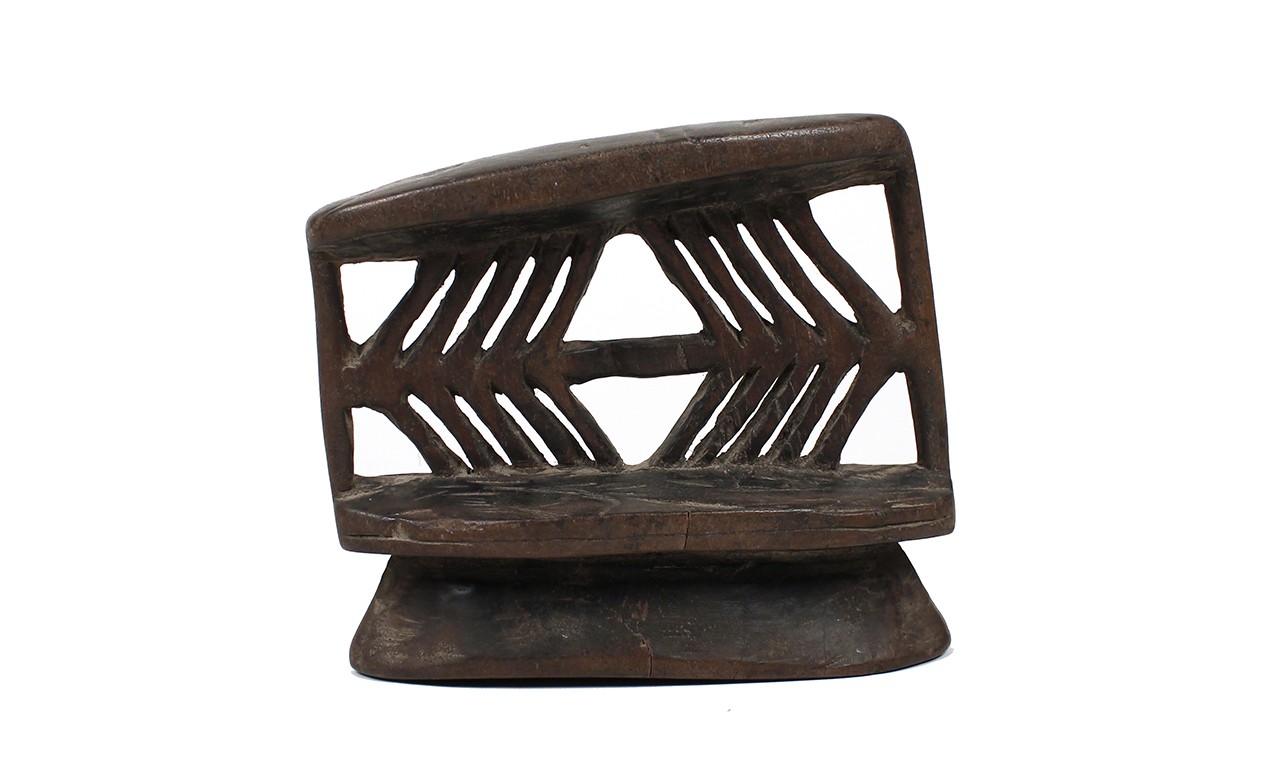 |
Headrest, early 20th Century
Collingwood Bay, Oro Province, Papua New Guinea, Melanesia
Wood; 6 × 7 × 2 1/2 in.
2015.7.11
Gift of Mr. Michael Hamson |
Sleep is Colling(wood)
Of the many wood-carved objects to come out of the Collingwood Bay area, geometric openwork headrests are among the most iconic. Though modern examples now take stylistic liberties regarding the shape and carvings on the supports, both the chevron spokes and wedge-shaped base indicate that this early 20th Century headrest is made according to classic standards. The headrests were used by both men and women. Male scouts like to sleep on them to keep them slightly more alert at night while Collingwood Bay area women use the headrests to protect the elaborate red hairstyles they prepare before coming of age ceremonies. The wooden pillows are important possessions that are occasionally buried with their deceased owners.
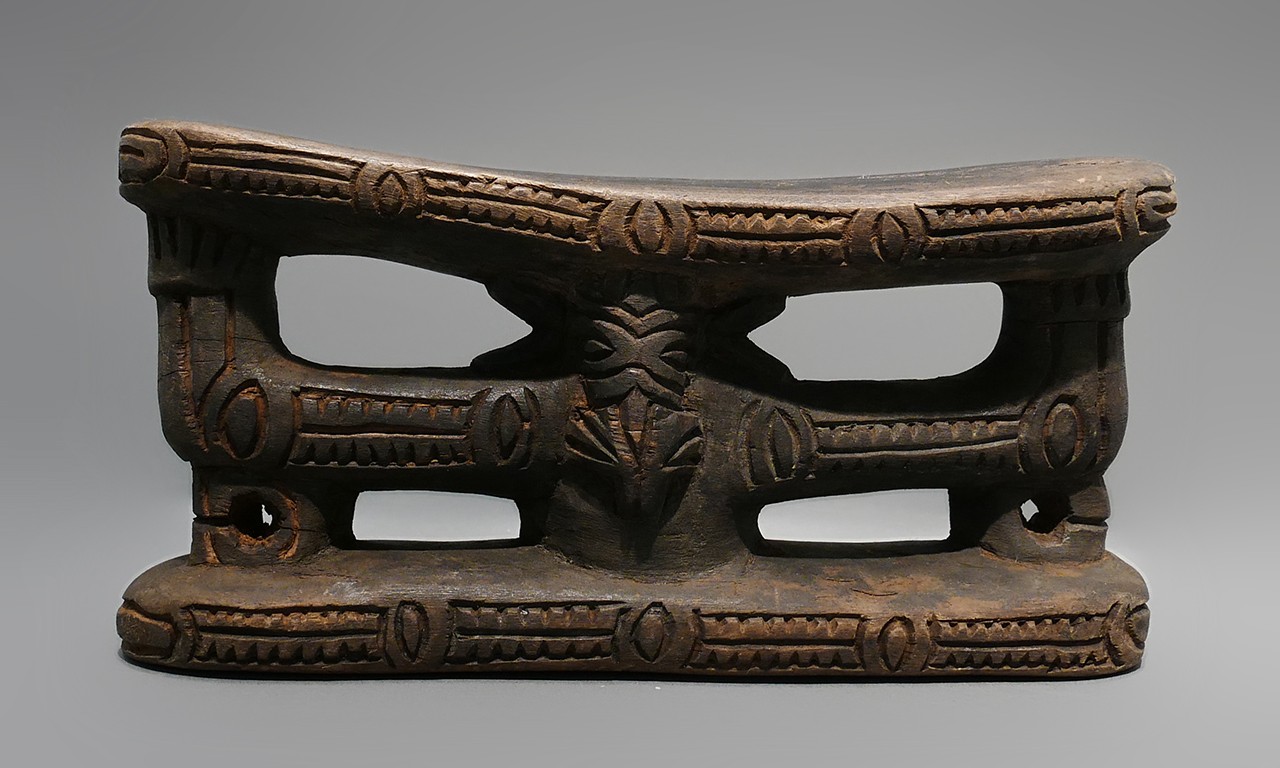 |
Headrest, mid 20th Century
Tami style; Umboi Island, Sassi Islands, Morobe Province, Papua New Guinea, Melanesia
Wood; 4 3/8 × 8 5/8 × 2 1/8 in.
2018.14.37
Anonymous Gift |
Huon Style, Many Places
The Huon Gulf region is well known for its signature Tami style of carving, first created and long practiced exclusively by residents of the Tami Islands, but later copied by the neighboring Siassi islanders and others. This unique style is distinguished by its high-relief and requires meticulous planning beforehand and great skill to achieve the desired effect. Tami style headrests tend to be roughly rectangular and have a flat or only slightly curved cradle for the user’s head. Human and geometric figures in openwork decorate the main body of the rest. The similarity between these carvings and those on Tami style bowls evidence that both were carved by the same talented craftsmen, as the headrest designs are reminiscent of the carvings decorating the lips of bowls. Inhabiting islands without enough resources to be self-sustaining, the Tami instead developed crafts so that they could trade for goods. A complex network of trade in the region led Tami style goods to spread throughout the Huon Gulf. Individuals outside the Tami community using the style constituted a severe offence.
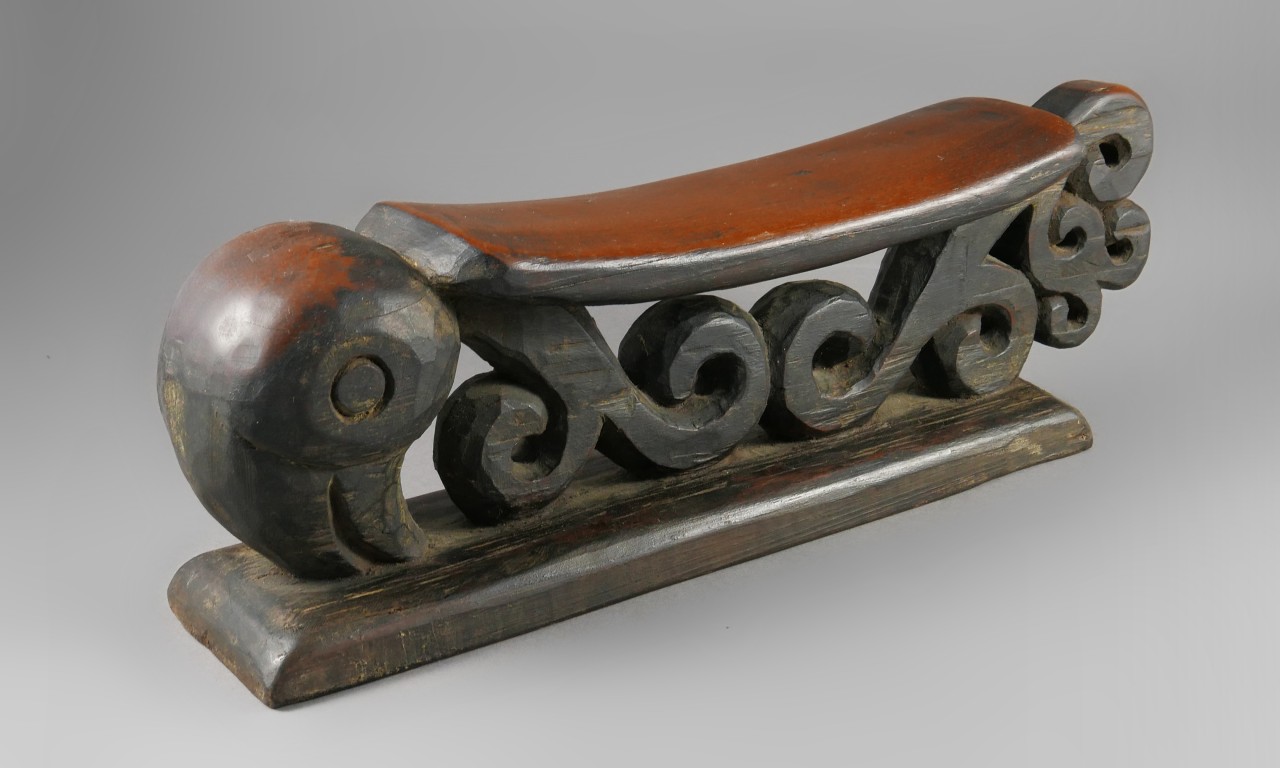 |
Headrest, 20th Century
Cenderawasih (Geelvink) Bay, Papua Province, Indonesia, Melanesia
Wood; 4 1/2 × 12 1/2 × 2 1/2 in.
2019.22.29
Anonymous Gift |
Korwar Never Changes
This wooden headrest was made by a culture in northwest New Guinea’s Cenderawasih Bay. Perhaps the two most defining motifs to the region are korwar—figurative representations of ancestors—and the scroll. With a support structure composed of single scrolls and double scrolls, this headrest is characteristic of the region despite lacking a figurative representation. The scroll pattern was likely initially inspired by Indonesian woodcarving styles and may be a stylized representation of coral or octopi arms, both of which are water spirits. Many Cenderawasih carvers double as shaman, who commune with the dead to depict them as korwar. These headrests were used by the owner to help guide them and protect them in the dream world while they slept.
Text and images may be under copyright. Please contact Collection Department for permission to use. References are available on request. Information subject to change upon further research.


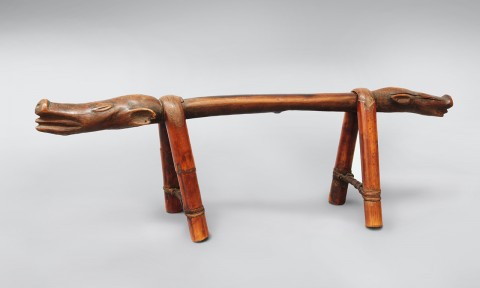
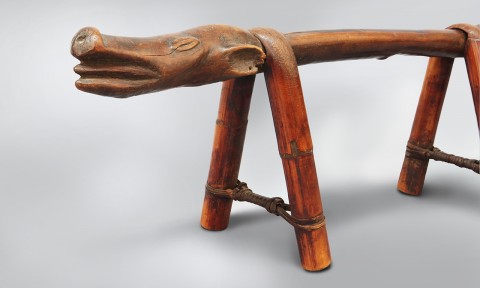
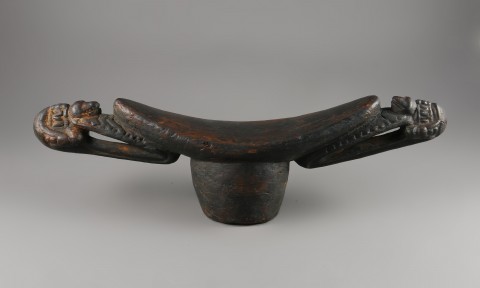
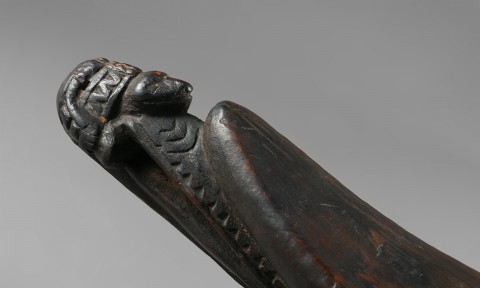



Comments